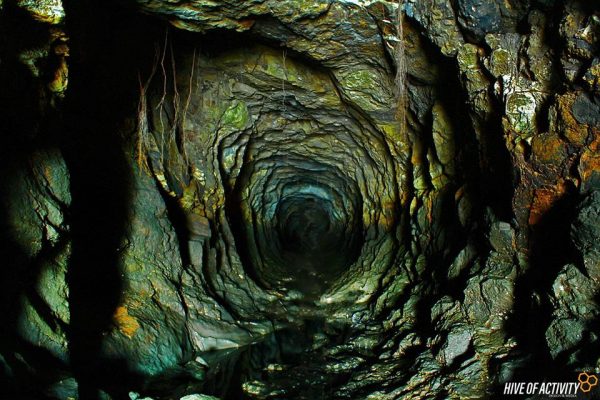31 May Article : Brisbanes Secret Cave From the 1800s
Brisbane began to grow rapidly from the 1830s onwards, and far more brick buildings were being erected by this time. Many of these replaced the squalid hut-life conditions endured throughout the 1820s. A map offering a rough guide as to what the city would have looked like is included below. However, a major flooding problem emerged around this time, and it threatened to put an end to all that had been accomplished so far. This problem could attributed to the heavy rainfall runoff from surrounding swamps and high ridges. A number of reports from the 1830s detail how rainfall would naturally find its way into the swamps, via a number of lagoons, before passing down through Brisbane where the major river was located. Much of the surrounding land was impassable, especially during wet weather, so very little work could be done to divert the flow of water into the newly developing town. Water supply and drainage thus became one of the new council’s main priorities.
Initially, simple surface and box drains were laid down across the city. The surface drain, which involved constructing a road that was slightly higher in the centre than at the sides (a design that continues to be used today), was designed to carry water from key roads and streets into a ditch located on either side. The simple box drain was a covered flat bottomed drain that would carry a large volume of water away to the main river. The design entailed these drains being wide, but since they were flat they would regularly fill to full capacity, or become blocked by debris swept in from the surrounding swamps. Occasionally, although it was rare since they were so expensive, brick barrel drains would be constructed. These, however, turned out to be less effective than the box drain.
In the 1840s an engineer named John Phillips designed the ovoid drain; drawing inspiration from similar layouts used in London, a city which had a long history of flooding problems but reached a solution by developing various inclinations for the purpose of receiving and carrying away water. Phillips also took note of the efficiency of newer British systems that used separate drains to carry away storm water and sewage. The first ovoid drain was fully completed in 1860; it was built from stone and lay above the ground, rather than below. By 1861, though, a decision was passed to culvert most of the open drains across Brisbane, including the older box designs. While stone was used in the fabrication of most new drains initially, brick was later selected for use because it was a much cheaper material. By 1875, the Department of Harbours and Rivers were entrusted with all responsibility for drainage and sewage control; to take pressure off the council who had may other issues to attend to since the town was expanding at an incredible rate. One of the DHR engineers, William Nisbet, took charge of the project and by 1877 ensured that every drain would be used exclusively, for either surface water or sewage; he guaranteed that neither would be mixed according to his plans.

REFERENCE : http://www.wildboyz-ue.com/burfords-batcave/







No Comments